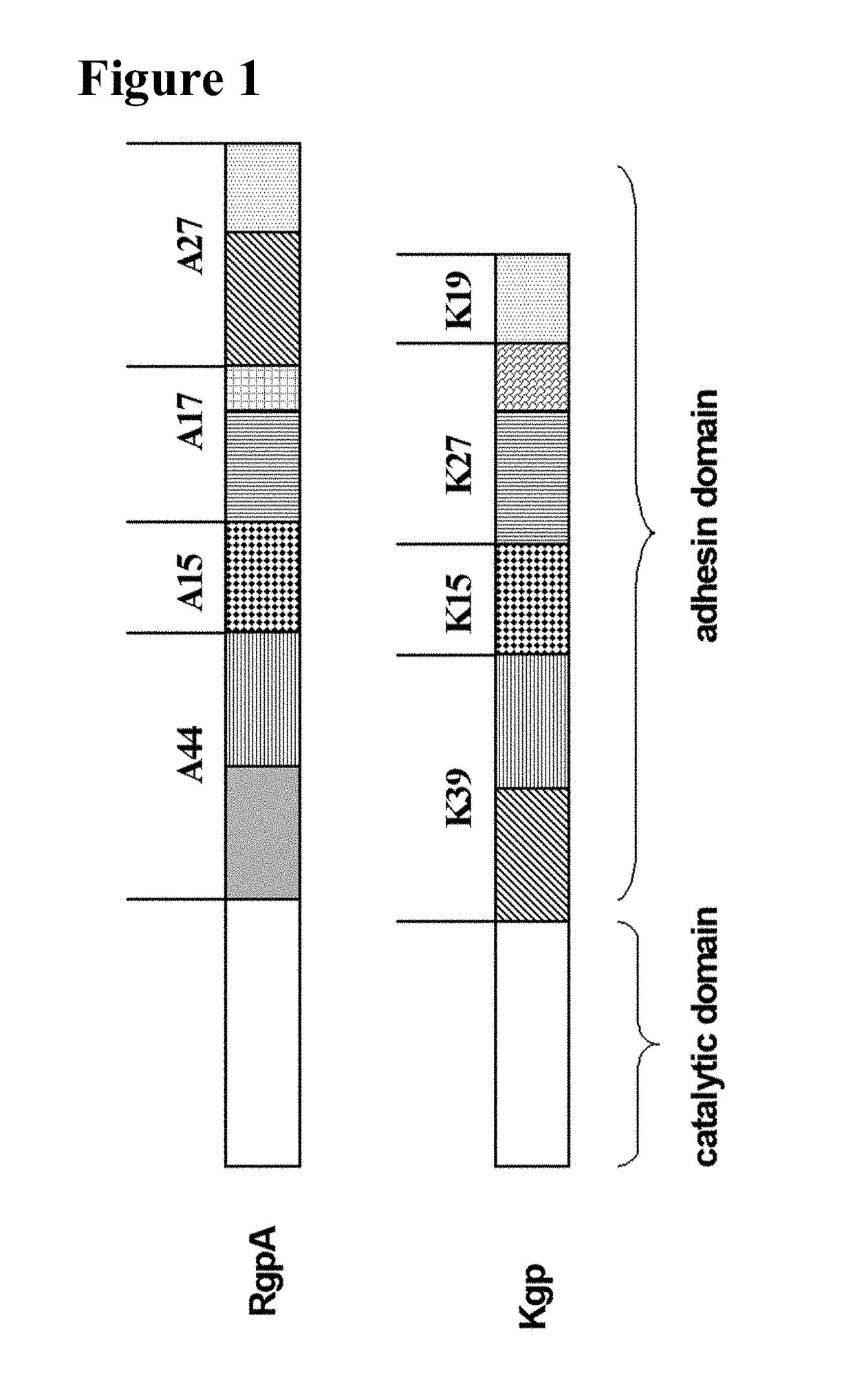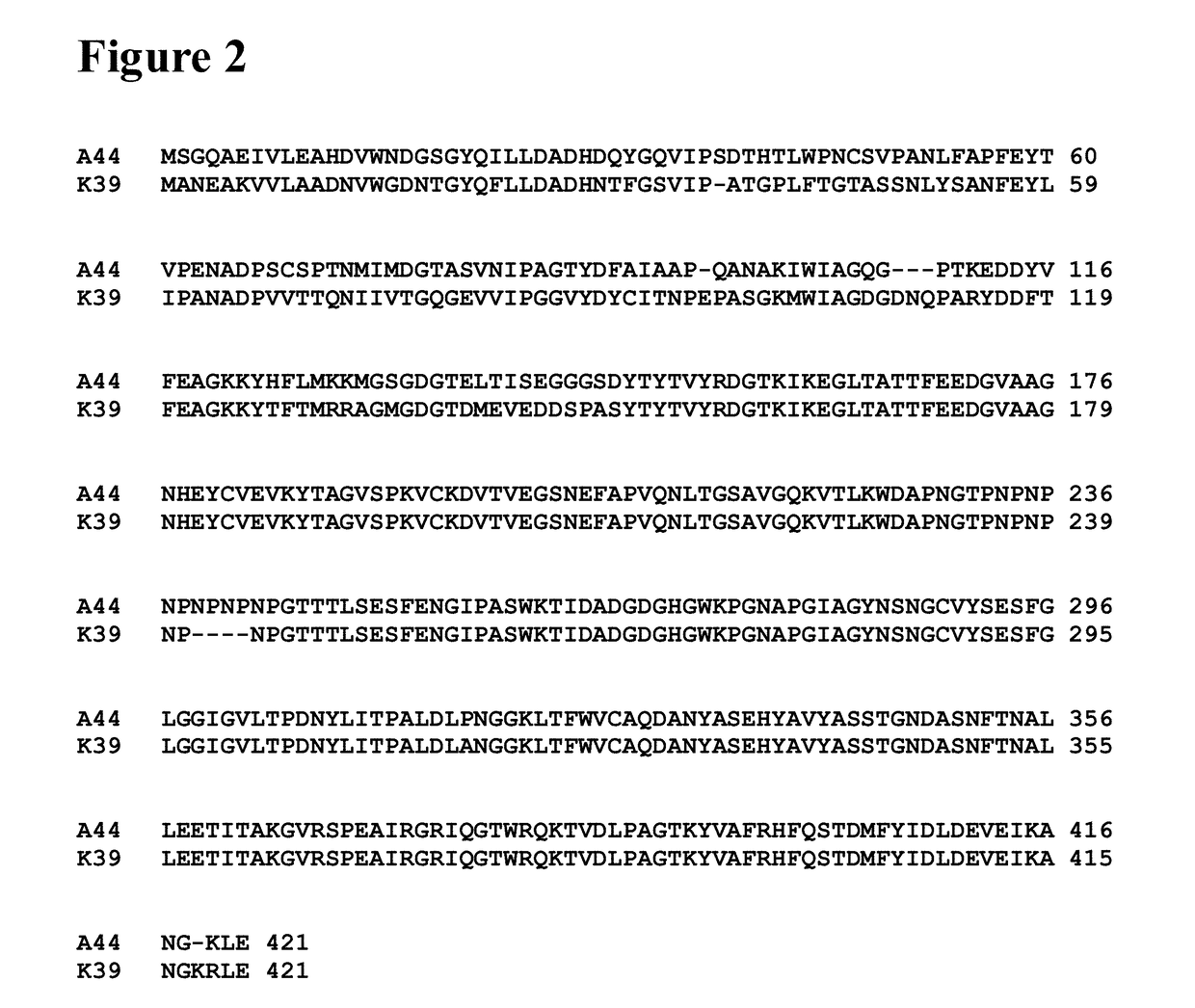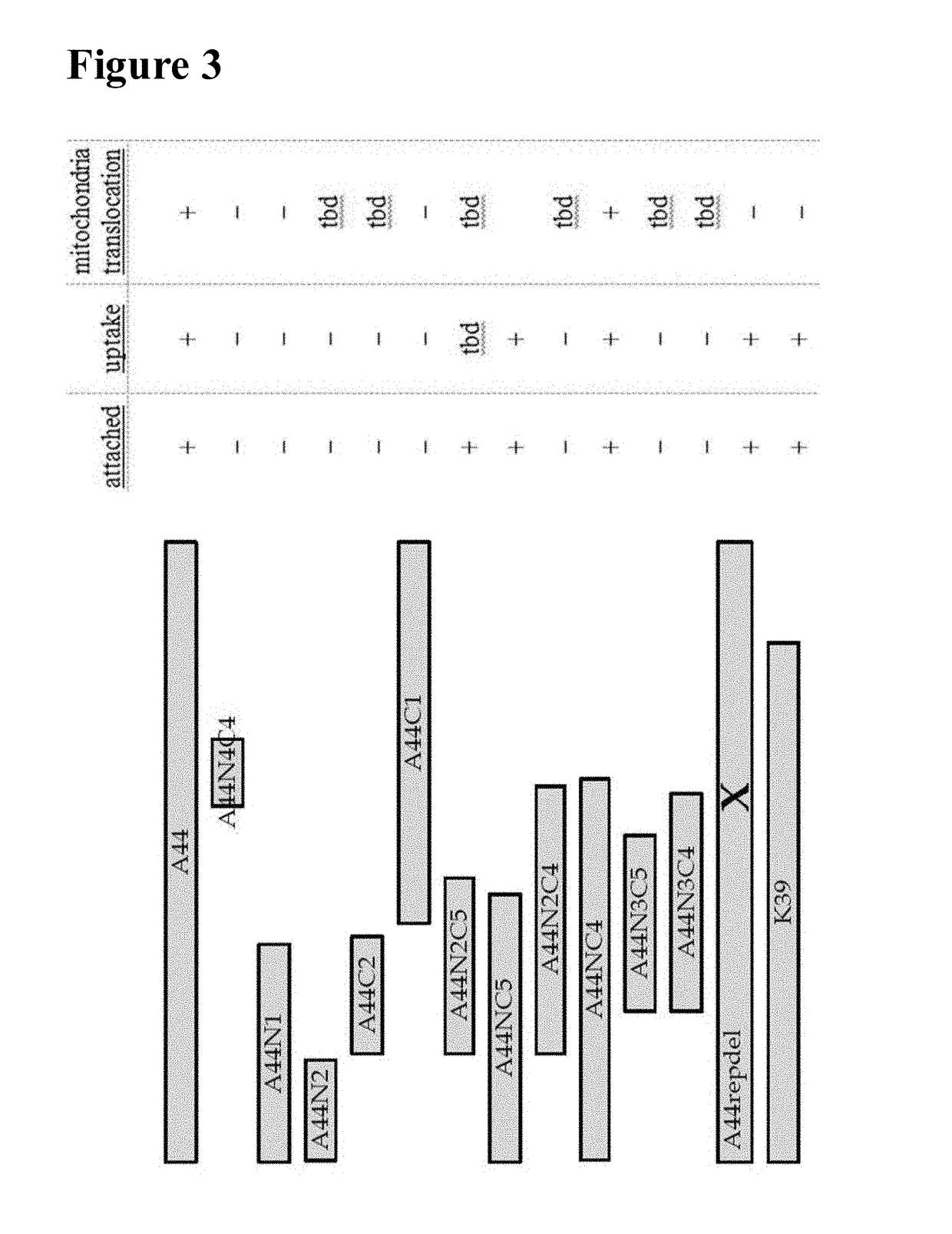Conjugates for delivery to mitochondria
- Summary
- Abstract
- Description
- Claims
- Application Information
AI Technical Summary
Benefits of technology
Problems solved by technology
Method used
Image
Examples
example 1
ion of A44 / K39 Peptide Expression Plasmids and Expression of Recombinant Peptides
[0212]Construction and purification of the full-length A44 peptide and peptide fragments depicted in FIG. 3 were performed as previously described (Boisvert and Duncan (2008) supra). Briefly, various portions of the A44 peptide-encoding region were amplified from chromosomal DNA of P. gingivalis ATCC 33277 by PCR using various combinations of the forward and reverse primers shown in Table 1. PCR amplicons were ligated directly into pTOPO using the TOPO TA cloning kit (Invitrogen). Resulting pTOPO plasmids were digested with NdeI and XhoI; inserts were gel-purified using the Qiaquick kit (Qiagen) and then ligated with NdeI- and XhoI-digested pET22b vectors. E. coli BL21 (Novagen) were transformed with the ligated vectors and exposed to 1 mM isopropyl-a D-thiogalactopyranoside (IPTG) for 3-4 hours to induce expression of the recombinant peptide. Cells were lysed using 5 ml of lysis buffer per gram wet wei...
example 2
ation of A44 / K39 Peptide Domains Involved in Cellular Untake
[0214]Cellular uptake (i.e., cell penetration) of A44 peptides and fragments thereof was determined by Western blot of acid-washed cell lysates using methods set forth in Boisvert and Duncan (2008) supra. Briefly, 2 mg / ml recombinant A44-based peptide (full length or fragment) was incubated with HEp-2 epithelial cell monolayers for about 60 minutes. Cells were then washed three times with PBS followed by treatment with an acid wash solution (0.2 M acetic acid, 0.5 M NaCl, pH 2.5) to remove any externally attached peptide (5 min, RT). Cells were washed again (3×PBS) and lysed with water. Cellular lysates were harvested and the protein components separated by SDS-PAGE and transferred onto a nitrocellulose membrane. Presence of peptides in lysates was assayed with anti-His-tag antibodies, secondary HRP-antibodies and ECL according to the manufacturers' recommendation (Millipore). Results are summarized in FIG. 3. This is one e...
example 3
ation of A44 / K39 Peptide Domains Involved in Mitochondrial Targeting
[0216]Translocation to mitochondria was determined by fluorescent microscopy and cell fractionation in combination with Western Blots as shown previously (Boisvert and Duncan (2010) supra). Briefly, HEp-2 epithelial cells were incubated with recombinant an A44-derived peptide for about 60 minutes, washed and lysed with saponin buffer (1% (w / v) saponin in 10 mM Tris / HCl (pH 7.5). The supernatant in centrifuged samples contains cytoplasmic proteins. The resulting pellet was resuspended in saponin buffer+0.05% (v / v) Triton-X-100 and centrifuged again (max. speed, 5 min). The supernatant contained mitochondrial proteins as shown by Western Blot with anti-cytochrome C antibodies. Presence of A44-derived peptide in this fraction was visualized as described above. A44-derived peptide identified in this fraction can be further tested by confocal microscopy for co-localization with MitoTracker (Invitrogen) as described previ...
PUM
| Property | Measurement | Unit |
|---|---|---|
| Fraction | aaaaa | aaaaa |
| Length | aaaaa | aaaaa |
| Cell death | aaaaa | aaaaa |
Abstract
Description
Claims
Application Information
 Login to View More
Login to View More - R&D
- Intellectual Property
- Life Sciences
- Materials
- Tech Scout
- Unparalleled Data Quality
- Higher Quality Content
- 60% Fewer Hallucinations
Browse by: Latest US Patents, China's latest patents, Technical Efficacy Thesaurus, Application Domain, Technology Topic, Popular Technical Reports.
© 2025 PatSnap. All rights reserved.Legal|Privacy policy|Modern Slavery Act Transparency Statement|Sitemap|About US| Contact US: help@patsnap.com



